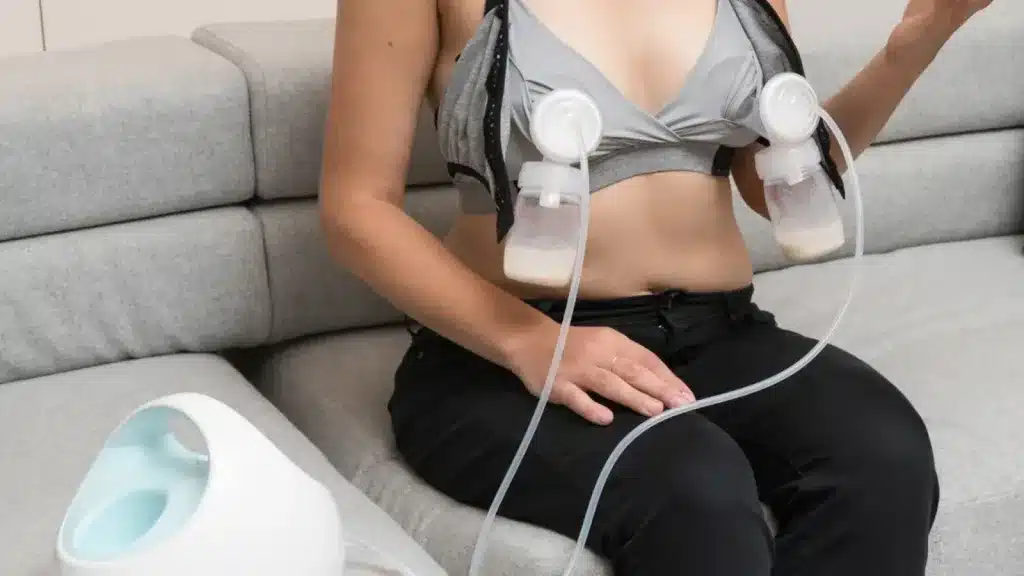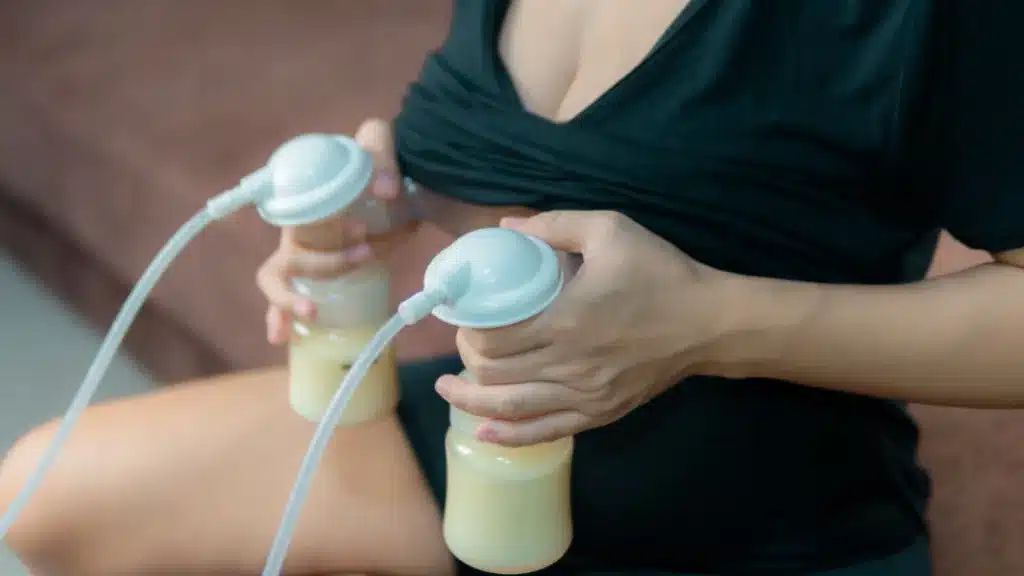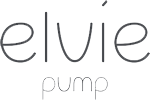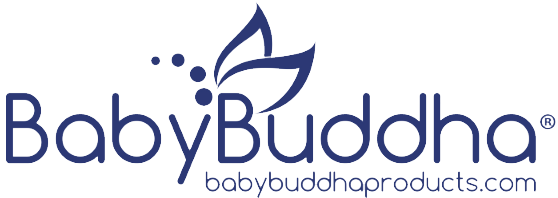Best Breast Pumps for Twins Top Options for Moms

You love your babies, both of them. You love the way they stretch in sync, the tiny sighs, the way their heads rest against your chest. But feeding twins can feel like you’re always one step behind, always pumping, nursing, or cleaning something, and rarely catching a moment for yourself.
We get it, pumping for twins isn’t easy. Your body’s doing double the work, and your days (and nights) often feel stretched to the edge. That’s why the right breast pump matters. It’s not just a tool, it’s support. The kind that helps protect your time, your energy, and lets you keep going without giving every last part of yourself.
So we’ve gathered the best breast pumps for twins, not just because they work, but because they were designed to work with you. Let’s help you find one that fits your requirements.
What to Look for in a Pump When You’re Feeding Two

When you’re nursing or pumping for twins, your time, energy, and body are all working overtime. The right breast pump can help make that load feel a little lighter. Look for features that save time, protect your comfort, and keep up with your daily rhythm.
Here’s what really matters:
- Strong suction power helps you express more milk in less time, something that’s especially important when you’re feeding two.
- A double pumping feature allows you to pump both breasts at once, cutting your session time in half and supporting your milk supply.
- A comfortable fit with soft flanges and adjustable suction levels can prevent soreness and protect your nipples during frequent use.
- Easy setup and cleaning are key, since you’ll be using your pump often and don’t need extra steps slowing you down.
- Portability matters when you’re on the go; a rechargeable or battery-operated pump gives you more freedom to move around.
- A quiet motor allows for discreet pumping near sleeping babies or during moments when you need peace and calm.
- Consider insurance-covered options if you want to minimize costs; many double electric pumps are fully or partially covered.
What Kind of Pump Works Best for Twin Moms?
Feeding two babies means your pump needs to keep up with more frequent sessions and higher milk demands. Not every pump is built for that pace, so understanding the types available can help you choose what truly supports your daily flow.
1. Double Electric Pumps
These are the most recommended for moms of twins. They allow you to pump both breasts at the same time, cutting your session time in half and supporting a steady milk supply. Many also offer adjustable suction, quiet motors, and hands-free features to help you multitask.
Best for: Frequent or exclusive pumping
2. Manual Pumps
Manual pumps are affordable, quiet, and easy to carry, but they require more effort and only allow for one side at a time. While they’re not ideal for regular use with twins, they can be helpful as a backup or when traveling.
Best for: Occasional or emergency use
3. Hospital-Grade Pumps
These pumps are designed for intensive use, offering powerful but gentle suction to support milk production. They’re often used in the NICU or during the early weeks to help establish supply. Many can be rented or are available through insurance plans.
Best for: Exclusive pumping or building supply in the early stages
Our Top 5 Picks: Breast Pumps Twin Moms Actually Trust in 2025

Finding a pump that keeps up with twins, without exhausting you, matters. These models come highly recommended by experts and real mom communities for their comfort, reliability, and efficiency:
1. Spectra S1 Plus Electric Breast Pump
Best for: Moms of twins who want hospital-grade suction with the freedom to move.
The Spectra S1 Plus is a favorite among twin moms, and for good reason. It offers powerful, hospital-grade suction while staying gentle on the body, making it easier to express milk efficiently, even with back-to-back sessions.
Key Features:
- Hospital-grade suction up to 270 mmHg
- Built-in rechargeable battery
- Massage and expression modes
- Quiet motor (~45 dB)
- Closed system for hygiene
- Digital controls with night-light and timer
Why moms love it: Strong performance, quiet operation, and the flexibility to pump without being tied down.
A gentle heads-up: It’s not as compact as wearable pumps, so it may take up more space in your bag, but most moms agree it’s worth it for the output and comfort it delivers.
Approx. Price: $216
2. Medela Symphony Hospital-Grade Breast Pump
Best for: Moms who are exclusively pumping or building supply in the early days.
The Medela Symphony is often the first pump recommended in hospitals, and it earns that trust every time. Designed to mimic a baby’s natural sucking rhythm with Medela’s 2-Phase Expression® Technology, it’s incredibly gentle while delivering powerful results.
Key Features:
- Hospital-grade, rental-based system
- 2-Phase Expression® technology
- Ultra-gentle suction
- Trusted by NICUs and lactation consultants
- Often covered by insurance
Why moms love it: It’s reliable, quiet, and incredibly effective for regular pumping. Many moms say it helped them build and maintain a strong supply when other pumps fell short.
A gentle heads-up: It’s larger and not portable, so it’s best kept in one spot, but for those early weeks (and beyond), it can be the most supportive tool in your feeding journey.
Approx. Price: Rental ($50–$100/month)
3. Momcozy M5 Wearable Double Electric Pump
Best for: Twin moms who need discreet, hands-free pumping with strong suction.
The Momcozy M5 is a fully wearable pump that slips into your bra and lets you move freely while expressing milk. With up to 300 mmHg of suction and smart app tracking, it’s designed to support busy moms who are always multitasking.
Key Features:
- Fully wearable, tuck-into-bra design
- Up to 300 mmHg suction with 3 modes × 9 levels
- Ultra-compact and quiet
- Smart app integration
- Fewer parts for easier cleaning
Why moms love it: Comfortable, quiet, and gives back a sense of freedom during a very full season.
A gentle heads-up: Battery life is good but may not last all day, consider charging between sessions.
Approx. Price: $200
4. Willow 360™ Wearable Breast Pump
Best for: Moms looking for complete freedom with a fully cordless design.
Willow 360 fits in your bra and operates with zero cords or external parts. It’s great for on-the-go pumping, and its leak-proof design means you can bend, move, and care for both babies without interruptions.
Key Features:
- Fully enclosed, leak-proof system
- Cord-free and tubeless
- Quiet, discreet operation
- Adjustable suction and app support
- Ideal for active or working moms
Why moms love it: It’s quiet, hands-free, and gives back valuable time and flexibility.
A gentle heads-up: It can take a little practice to get the fit just right, and all insurance plans may not cover it.
Approx. Price: $400–$500
5. Elvie Stride Wearable Breast Pump
Best for: Moms who need hands-free freedom while juggling two babies.
The Elvie Stride offers something many twin moms crave: mobility. This wearable pump fits right into your bra, so you can pump while comforting a baby, making lunch, or simply catching your breath.
What makes it stand out is its combination of hospital-grade suction with wearable convenience. You get effective milk expression without being tied to a wall or carrying around a bulky motor.
Key Features:
- Wearable and ultra-quiet
- Hospital-grade suction in compact form
- Lightweight and easy to clean
- Battery-powered motor with flexible tubing
- Discreet enough for multitasking or public use
A gentle heads-up: The learning curve can be real, getting the fit just right takes patience. And if you have a high supply, you may need to pause mid-session to empty the collection cups.
Approx. Price: $250–$500
Many moms are surprised to learn their breast pump is fully or partially covered by insurance. Check your eligibility with the Insurance Covered Breast Pump.
Tips for Successful Pumping Breast Milk for Twins

Pumping for two can feel like a full-time job, but with the right routine, tools, and mindset, it can become more manageable. These simple tips can help protect your time, boost your supply, and support your well-being:
- Follow a consistent pumping schedule to maintain and build your milk supply, especially during the first few weeks.
- Pump both breasts at the same time to save time and improve milk output.
- Use a hands-free pumping bra to stay comfortable and free up your hands while pumping.
- Drink plenty of water and eat nourishing meals to support your body’s milk production.
- Keep extra pump parts available so you’re not rushed between sessions or stuck waiting for parts to dry.
- Label and store breast milk properly to stay organized and avoid waste.
- Soothe sore nipples with lanolin cream or warm compresses if pumping becomes uncomfortable.
- Reach out for support; a lactation consultant can offer guidance tailored to your needs.
- Be kind to yourself, feeding two babies is demanding. Every ounce matters, and so does your rest.
Final Words
Caring for two little ones isn’t just twice the feeding. It’s twice the moments, twice the emotion, and sometimes, twice the overwhelm. If you’re choosing to pump, you’re already showing up with so much love and intention. That’s enough.
The right pump won’t make everything easy, but it can offer you something valuable: comfort, freedom, and just a little more room to breathe. And if things don’t always go to plan, that’s okay. Feeding your twins is not just about ounces. It’s about connection, trust, and the quiet, brave ways you show up every day.
You’re doing more than enough. Keep going gently. You’ve got this.
FAQs
1. What kind of breast pump is best for twins?
Double electric or hospital-grade pumps are usually the most efficient for twin feeding. They allow you to pump both breasts at once, saving time and helping maintain a steady milk supply.
2. Can I get a breast pump through insurance if I have twins?
Yes, many insurance plans cover one breast pump per pregnancy. Some plans may even offer coverage for hospital-grade rentals or upgrades. It’s always worth checking your benefits.
3. How often should I pump with twins?
In the early weeks, try pumping every 2–3 hours to establish supply, especially if you’re not nursing directly. As your routine stabilizes, you can adjust based on your babies’ needs and your comfort.
4. Is it okay to supplement with formula while pumping for twins?
Yes. Supplementing is a personal choice and can be a helpful tool. Many twin moms use formula to help meet feeding goals while still maintaining a pumping routine.
5. How do I manage pumping with two babies at home?
Planning helps, have spare pump parts ready, use a hands-free bra or wearable pump, and ask for support when you need it. Small routines can make a big difference over time.










